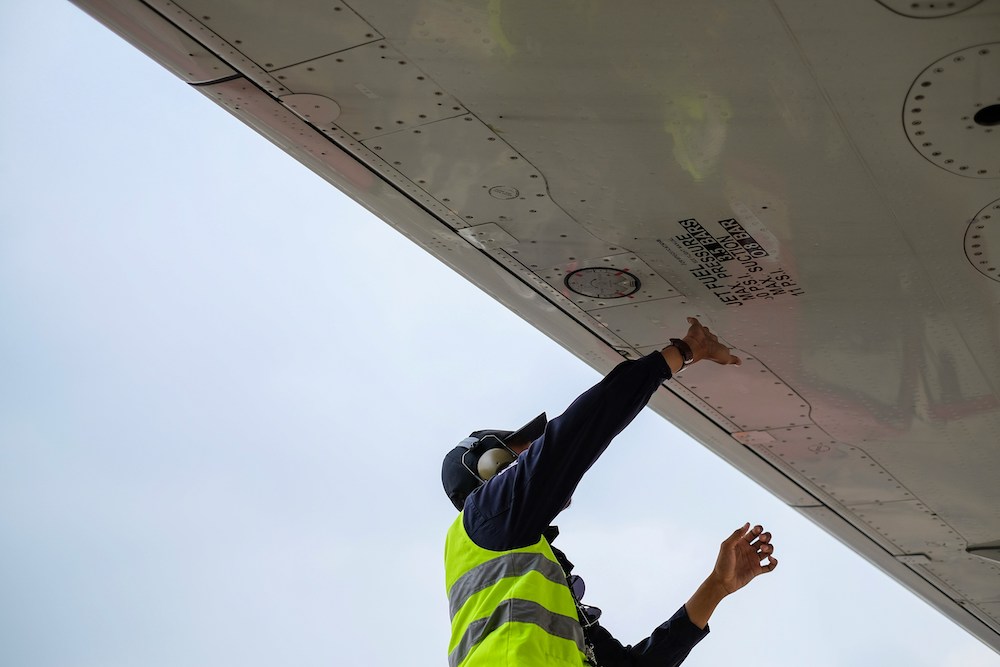Ensuring Aircraft Logbooks and Maintenance Documentation are Comprehensive: The How and Why

An aircraft logbook is a vital plane component often overlooked. This document is specifically designed to record every significant event in the life of an aircraft, covering every important detail from the plane’s first flight to the latest maintenance check. And, as an increasing number of news headlines call out hazardous oversights by both manufacturers and maintenance staff, ensuring proper procedures are followed is more important than ever.
By understanding the “how” and “why” of logbook maintenance, we can appreciate their pivotal role in ensuring worldwide aircraft operation and safety.
Understanding Aircraft Logbooks
An aircraft logbook is like the personal journal of a plane, keeping a detailed record of an aircraft’s operational history. This document goes beyond just being a book for recording flights and technical operations; it is also an essential legal document in the aviation industry. The aircraft logbooks ensure compliance with aviation regulations, support maintenance, and repair activities, and provide necessary insights for safety audits. Essentially, they bridge an aircraft’s past and its readiness for future flights.
Types of Information Typically Recorded:
- Flight Hours: Each flight is logged with details such as date, duration, and nature of the flight. This information is crucial for tracking the aircraft’s usage and planning maintenance schedules.
- Maintenance Records: Every maintenance activity must be recorded, no matter how minor. These entries include routine checks, part replacements, and detailed repair descriptions.
- Repairs: In cases of malfunctions or damages, detailed records of the diagnosis, repair process, and parts used are essential. This ensures transparency and traceability in repair works.
- Inspections: Regular inspections are thoroughly documented, whether mandated by aviation authorities or conducted as part of internal protocols. These include annual inspections, safety checks, and pre-flight assessments.
- Documentation of the Responsible Party: Each entry in the aircraft logbook should include the name of the overseeing individual, complete with their signature and certificate details.
The Importance of Comprehensive Logbooks
Detailed records and documentation of aircraft logbooks allow for identifying patterns that indicate underlying mechanical issues, ensuring timely interventions before they evolve into safety hazards. They offer vital details to maintenance crews in emergencies, aiding them in understanding the aircraft’s history and potentially diagnosing issues more accurately.
In other words, maintaining an up-to-date logbook is a proactive approach to maintenance, significantly decreasing the likelihood of accidents and malfunctions with a comprehensive and detailed record.
Maintenance and Operational Efficiency
Effective aircraft maintenance hinges on detailed logbook records, which aid in early identification and addressing of potential issues through preventive maintenance. In turn, carriers can extend aircraft components’ lifespans and reduce the impact of various supply chain challenges.
An airplane’s maintenance logbooks are also key to emergency preparedness, offering critical historical data for swift, informed decision-making during crises. Regarding operational efficiency, logbooks streamline maintenance schedules, optimize flight availability, and reduce downtime. They also serve as educational tools for crew training, enhancing skills, and keeping teams informed about past maintenance solutions and outcomes.
Aviation Legal and Regulatory Compliance
Keeping a detailed aircraft logbook isn’t just for maintenance; it’s a mandatory legal document. Global aviation authorities, like the FAA and EASA, lay down strict rules to ensure every plane follows top-notch safety standards. Logbooks serve as legal proof of compliance. Aviation authorities regularly check them to ensure the aircraft meets all safety standards.
Impact on Aircraft Resale Value and Insurance
Logbooks do not only facilitate safety, easy maintenance, and legal compliance. They are also vital for preserving the economic value of an aircraft.
A detailed logbook can help maximize a plane’s resale value because it assures buyers of meticulous upkeep and reliability. Even insurance companies check these logs to determine how risky or reliable a plane might be. An incomplete or poorly maintained log record may mean higher premiums or denial of coverage, indicating heightened perceived risk.
Best Practices in Maintaining Airplane Logbooks
Regular Updates – Logbooks are null and void unless methodologically updated after every flight, maintenance session, or inspection.
Accuracy of Logbooks – Each entry should be detailed, precise, and verifiable. The aircraft logbook should tell precisely what maintenance was done and the accurate flight times, and note any fixes or new parts.
Standardization and Reinforcement – Using a standardized format for logbook entries ensures all important information is recorded consistently and clearly. This approach makes it easier for everyone involved—from pilots to inspectors—to understand and quickly find necessary information, thereby improving maintenance and inspection efficiency. What’s more, ensure that standards are followed by all crewmembers, letting no deviations slide.
Backup and Digital Solutions – Always have digitally saved versions of your aircraft maintenance logbooks that are regularly synchronized with the primary version.
Challenges in Maintaining Comprehensive Logbooks
- Human Error: Human error is common in logbook maintenance. It could be inaccurate data entry, forgetting something important, or misinterpreting maintenance requirements. Crews are particularly prone to miscalculating hours when trying to carry over details from an old logbook into a new one.
- Lost or Damaged Records: Physical logbooks are exposed to damage or loss. It could be by fire, moisture, regular wear and tear, or misplacement. When this happens, it results in a gap in the documented history of the aircraft.
- Technological Issues: Switching to an electronic logbook has its hurdles, too. Data loss or information breach can occur due to system failures, data loss, or cyber threats.
Strategies to Overcome These Challenges
- Training and Awareness: Regular training can reduce human error. You can teach personnel how to handle logbook entries and ensure they understand the relevance of logbook records.
- Backup Systems: Strong backup systems are necessary, especially for electronic logbooks. Regular backup keeps the logbooks in secure storage, a safety net against data loss.
- Regular Audits and Checks: Regular audits reveal any errors in the logbook. This can then be corrected to ensure the overall accuracy and integrity of the records.
- Transition to Digital Solutions: With digital logbooks, you’re spared the worry of physical damage like with physical ones. But there’s a catch; there’s a risk of losing data or dealing with cyber issues. So, it’s crucial to amp up cybersecurity to stay safe.
Electronic vs Paper Logbooks: A Brief Pros and Cons of Each Format
Electronic Logbooks
- Pros: Enhanced accessibility and storage efficiency; easier to update and search; potential for automatic data entry from digital systems; reduced risk of physical damage or loss.
- Cons: Dependence on technology and potential for data loss due to system failures; cybersecurity concerns; need for regular backups.
Paper Logbooks
- Pros: Tangible record that is not reliant on technology; simplicity and familiarity of use; no risk of data loss due to technological failures.
- Cons: Vulnerability to physical damage or loss; more challenging to update and search; storage and handling concerns.
Ultimately, the choice between electronic and paper aircraft maintenance logbooks depends on the specific needs and situation of the aircraft operator. Many operators now use a combination of both, enjoying the benefits of digital efficiency while maintaining paper records as a fail-safe.
Key Takeaways About Ensuring Comprehensive Aircraft Maintenance Logbooks
If you remember one thing, it should be that aircraft maintenance logbooks are far more than mere records; they are vital instruments that guide aviation professionals in making informed, responsible decisions.
Finally, precision and accuracy are not just expected in the aviation industry; they are mandatory requirements to ensure safety standards. An accurate and thorough logbook is a direct way to uphold these high aircraft safety and reliability standards.



